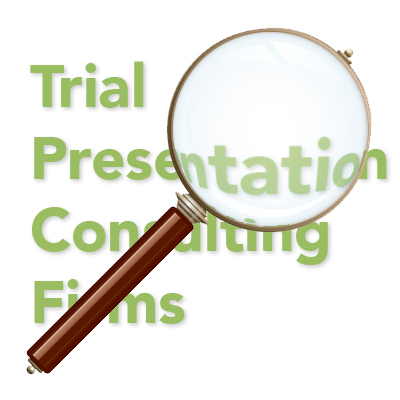by Theresa D. Villanueva, Esq.
Director, Litigation Consulting
A2L Consulting
You are going to trial. You have spent months or years gathering exhibits, writing motions, conducting depositions and mentally preparing yourself. And now, you have made the wise decision to hire a trial presentation consulting firm to assist you with your case.
How does a trial presentation consulting company work, and what value does it add?
For attorneys who go to trial often and use trial consultants frequently, this question is easy to answer. However, for many attorneys, this may be their first experience working with such a firm. They may have little idea about how the trial presentation consulting firm works or how it helps get the trial team prepped for trial. Here is an insider’s look as to how our team approaches your case as we assist your team in preparing for trial.
Our first step is to get as much information on the case from the team as possible -- any briefings, expert reports, and the like that will help us understand the case. We also look at any materials that the trial team has written, such as case summaries, opening statement outlines, and the like.
Around the same time, we sit with the trial team and begin to understand the facts as you see them and your ideas for how to present the case. These meetings are crucial. They help us understand the case on a deeper level and also help give us the chance to propose preliminary ideas for trial graphics – which gives us insight into the trial budget and into the attorneys’ preferences.
Understanding the preferred type of trial graphics, trial technology and, if needed, jury consulting enables us to determine the appropriate services and estimate the costs better. After all, it’s not a good use of our team’s time (or your budget) for us to brainstorm and create graphics that your team won’t want.
After meeting with the trial team, we dive in. We do our own research, go through our notes from the meeting, and start brainstorming ideas for graphics. One of the essential tools we use is called mind-mapping. Using a brainstorming tool called MindJet, we break down and analyze both sides of the case, organize the facts, develop topics for expert witnesses or other witnesses that may need graphics for their testimony, and organize any other areas we feel need attention.
To some, it may seem like time spent outlining the case and particularly spending time understanding the opposing side’s claims or defenses might not be the best use of our time. Quite the contrary, I strongly believe that by understanding the opposing side of the case, we can not only develop better demonstrative exhibits, but also readily come up with ideas or graphic exhibits ready and waiting to counter opposing counsel’s exhibits.
Next, in most cases, we share our suggested list of graphics with the team. This is especially helpful when cost is an issue. This process prevents us from creating graphics that the team just doesn’t want. Then, we start the process of creating a first draft of demonstrative exhibits.
If possible, our next step is to meet with the team in person to review and discuss the first set of draft exhibits. We find these in-person meetings invaluable for many reasons. First, we can see the team’s reaction to the graphics. Second, we get immediate feedback. This enables us to adapt our style to the team’s desires, if necessary. It also opens the door to collaboration and communication between our team and yours. In my experience, this meeting gives the attorneys a chance to give immediate input and feedback into the graphics, which reduces the number of misunderstandings that can occur by just sending over a draft via email. If an in-person meeting isn’t possible, a video call with a webex or gotomeeting where we share our screen and discuss the exhibits is just as beneficial.
From there we continue to move forward creating and revising exhibits. This revision process may continue up until the eve of trial, and in some instances continues all through the trial. ACCESS, our online collaboration portal, allows for the flow of communication to continue. It allows the team to provide immediate feedback and comments on the trial graphics as we go through the development process. As an online tool, it is also great for teams that are spread out across the country, attorneys who are always on the move, and a team that is in the middle of trial.
So there you have it. A little bit of insight into our team, and how we go about supporting yours. I hope that by receiving some insight into our process, you can have a better understanding of what is involved when you hire our team, and hopefully relieve any anxiety or uncertainty you may have about engaging a litigation consulting firm like ours.
Other information on our site related to litigation consulting and trial presentation consulting:





Leave a Comment